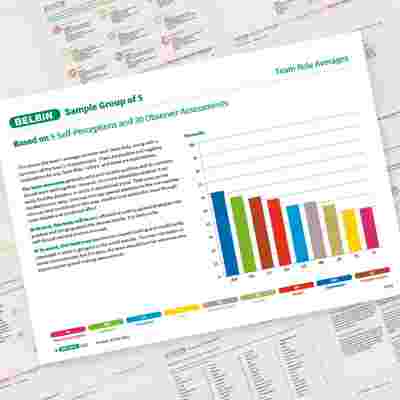Bulletproofing
In this strategy, one team member presents a project: what’s been achieved, where it’s struggling, and what’s planned next. They ask for candid feedback and constructive criticism.
The three-person sub-teams go off to identify possible risks and brainstorm ways to mitigate them. They may also offer challenges, innovations and offers of help.
The result? The team member is offered a variety of perspectives and approaches, involving peers in developing a solution without lessening authority.
Bulletproofing ensures that teams collaborate across silos and share collective responsibility. It leads to ‘bolder, more inclusive collaboration and faster decision-making’.
In Belbin terms, it can be useful to understand how people with different Team Role strengths can contribute at various stages of a project. Click here to read more.









